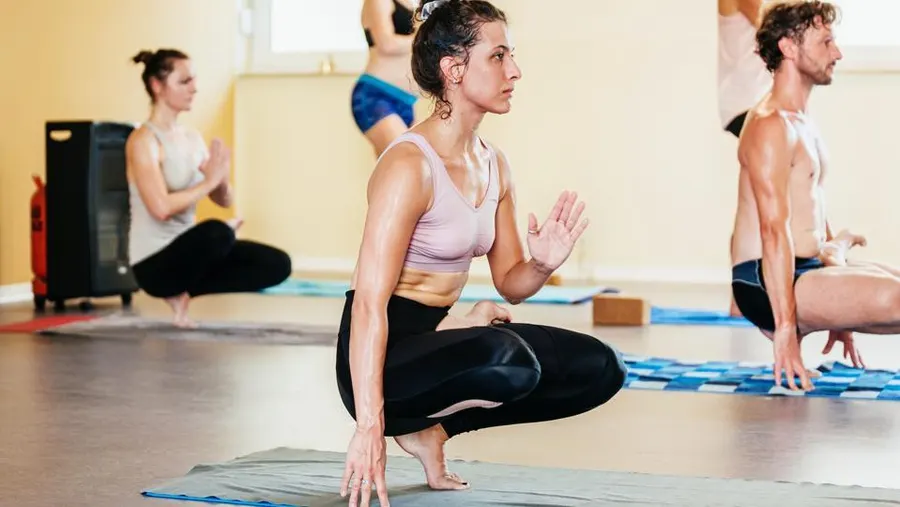Yoga has been here for decades now and millions of people have it as their daily part of life. This ancient practice is known for delivering magical benefits for both your physical and mental well-being. People practice it for different purposes but most do it to lead a healthy lifestyle specifically to gain better physical health. Over the years yoga has been introduced with new styles and interpretations that people choose according to their goals and preferences.
Among the top forms of yoga, there are two main ones, regular yoga and hot yoga. While both of these are practiced with similar poses, they actually vary from one another in terms of experience and environment. Understanding the differences between these two is essential for one to decide which one fits right for their fitness goals.
Let’s compare these two in-depth by throwing light on top differences, keep on reading to uncover the brief comparison of hot yoga and regular yoga.
Comparison Between Hot Yoga and Regular Yoga
Whether you looking to enjoy the meditative aspects of yoga or want to improve flexibility or strength, choosing between these two is the first step. This article will compare these two by focusing on top factors such as breathing techniques, flow and poses, breathing techniques, and physical benefits. By the end of this article you will be confident enough to make the right choice between these two, keep reading to learn more.
Here are 5 differentiating factors of hot yoga and regular yoga.
1. Temperature
One of the major differences between these two styles of yoga is the temperature in which they are practiced. Regular yoga is practiced at a standard room temperature of around 68 – 75 degrees Fahrenheit. This is usually the temperature for beginners who are completely new to yoga.
Hot yoga on the other hand as the name suggests, keeps a hot temperature. You can expect a heated room with 90 – 105 degrees Fahrenheit. This heat is intended to make the muscles relax and stretch more deeply. When muscles can stretch more deeply you comparatively reap more benefits from your practice. Considering this, people have to hot yoga difc studio to gain advantage of the heat and deepen their practice.
2. Intensity
Regular yoga has only the challenge of practicing the poses with the right and effective techniques. In contrast, hot yoga is considered to be more intense due to the added heat in the environment. While it is challenging it also elevates your practice through vigorous movements and deeper stretching.
This also builds better endurance than in regular yoga. This also enhances your ability to practice more complex poses in the yoga world with the help of improved flexibility. This elevates your yoga practice and allows you to reap maximum benefits from your practice.
3. Flow and Poses
The flow and poses of hot yoga and regular yoga also differ from one another based on temperature and class structure. Hot yoga mostly focuses on long-held poses, and you can expect yin yoga type of practice. This is because heat facilitates the deeper stretching which makes static postures better than quick transitions.
This slow approach of hot yoga not only enhances your flexibility but also minimizes the risk of injuries. Whereas in regular yoga the risk is comparatively higher because it has a quicker flow between poses.
See also: Why Should Seniors Prefer Chair Yoga?
4. Physical Benefits
This is one of the most important to consider when it comes to choosing between these two. Everyone has different reasons behind why they head to the yoga studios, so knowing what benefits these two offer is essential. Along with enhancing your flexibility, hot yoga with an increased amount of sweat can also help with weight loss and detoxification.
Regular yoga also carries countless benefits but achieving them may be challenging. This can be because of various reasons whether poor mobility or flexibility that don’t allow you to practice the poses correctly. Hot yoga by improving your flexibility can help you reap more benefits.
5. Breathing Techniques
Breathing is an essential aspect of all the yoga practices but the techniques used in hot yoga and regular yoga can vary. The heat and intensity of a heated yoga studio demand controlled breathing to regulate the body temperature and keep the heart stable. Yogis will find themselves focusing on deeper inhalations and longer exhalations to manage the heat.
In regular yoga, the breathing techniques are aligned with the overall flow of your practice. However, in hot you can improve your breathing techniques which will deepen your yoga practice. For this, you can enroll in hot yoga difc structured classes to learn with professional instructors and improve your yoga practice.
Level Up Your Yoga Practice with Hot Yoga
While both yoga styles carry benefits, hot yoga can further enhance your practice by providing you with more benefits. You can practice at a heated studio with professional instructors to avoid making any mistakes. Feel free to book your next class online and head to a studio to start your hot yoga practice anytime.
Read more: Signs of Gaining Muscle for Females: What to Look Out For
